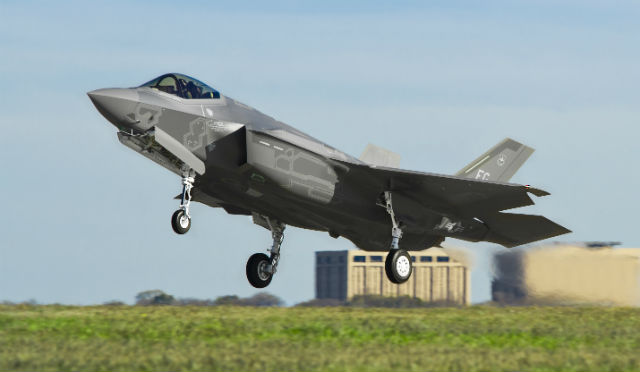Australian Prime Minister Tony Abbott will announce on 23 April that his government has approved the acquisition of 58 Lockheed Martin F-35A Lightning II Joint Strike Fighters, to replace the Royal Australian Air Force’s Boeing F/A-18A/B "classic" Hornets.
The 58 aircraft will comprise a second tranche of the Australian Defence Force’s Air 6000 Phase 2A/2B new air combat capability (NACC) project. The first tranche totalled 14 A-model jets, two of which are currently in final production as part of the multinational programme’s sixth lot of low-rate initial production (LRIP). A contract covering long-lead production items for the other 12 during LRIP blocks eight and nine is currently being negotiated with the USA.
The first two RAAF aircraft are scheduled to be delivered to the USAF’s integrated training centre at Luke AFB in Arizona by the end of the year, while the service’s first pilot for the type will begin training at Eglin AFB in California in December, and the second at Luke in April 2015. Australia's first F-35A unit will be 3 Sqn, based at RAAF Williamtown in New South Wales. Its first four aircraft are to be ferried to Australia in 2018 to support operational evaluation activities, before the type achieves initial operating capability in 2020.

Lockheed Martin
The decision follows the two-year deferral of a second tranche approval by the then-Labor government in May 2012. Since coming to power last September, the intentions of Abbott's coalition government have been difficult to gauge. Ministers have hinted at the massive spending cuts required to address a looming “budget emergency”, while also advocating the need for increased defence spending.
The 72 F-35As on order will replace the 71 F/A-18A/B Hornets of the RAAF's 3 and 77 squadrons, and its 2 Operational Conversion Unit – all based at Williamtown – as well as those of 75 Sqn, based at Tindal air base in the Northern Territory. Its fighter squadrons typically have 15 aircraft on strength, so a maintenance and attrition reserve of 12 jets has been allowed for.
A further Phase 2C tranche of the project, for up to 28 additional combat aircraft, was also deferred in 2012 for a decision in the early 2020s. These would replace the 24 F/A-18F Super Hornets of the RAAF's Amberley-based 1 and 6 squadrons. The Super Hornets were ordered in 2006 as a ‘bridging’ capability between the retirement of the General Dynamics F-111C in 2010 and the arrival of the F-35A. However, ongoing delays to the JSF programme mean it is likely the Super Hornets will be retained, alongside the 12 Boeing EA-18G Growler electronic attack aircraft also on order, for 20 years or more.
Source: Flight International



















